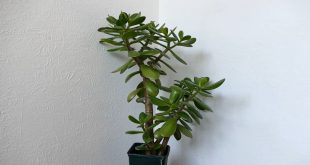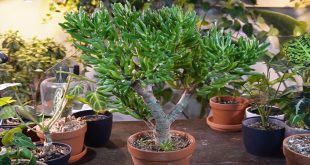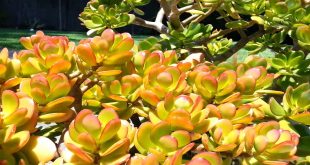Yes, you can put your jade plant outside in the winter if the temperature does not drop below 50°f (10°c). Jade plants are succulents that can tolerate cooler temperatures but may not survive freezing conditions.
However, it is crucial to provide proper protection, such as placing the plant in a sheltered location or using frost covers, to safeguard it from extreme cold and frost damage. It is also important to monitor the weather forecast regularly and bring the plant indoors if there is a risk of freezing temperatures.
Taking these precautions will help ensure the health and longevity of your jade plant during the winter season.
Understanding The Winter Needs Of Jade Plants
Jade plants are known for their succulent leaves and easy care, making them popular indoor plants. But what about during the winter months? Can you put your jade plant outside when the weather turns colder? Understanding the winter needs of jade plants is crucial to ensure their health and well-being.
In this section, we’ll explore the temperature preferences, sunlight requirements, and moisture needs of jade plants during winter.
Temperature Preferences Of Jade Plants:
- Jade plants prefer a temperature range of 50 to 75 degrees Fahrenheit.
- They can tolerate slightly cooler temperatures during the winter, but it’s important to avoid extreme cold or frost.
- Keep your jade plant away from cold drafts, such as near windows or doors, as these can cause temperature fluctuations.
The Role Of Sunlight During Winter Months:
- Jade plants thrive in bright light, but they don’t require direct sunlight during the winter.
- Place your jade plant near a window that receives indirect or filtered light.
- If you notice your jade plant stretching or leaning towards the light, it may be an indication that it needs more sunlight. Consider using artificial grow lights to supplement the natural light.
Moisture Requirements In Winter For Jade Plants:
- Jade plants have low moisture needs, and this holds true during the winter months as well.
- Allow the soil to dry out slightly between watering’s, as overwatering can lead to root rot.
- Depending on your home’s humidity level, you may need to adjust your watering frequency accordingly. Use your fingers to check the moisture level in the soil before watering.
Remember, each jade plant is unique, and their specific needs may vary. Monitor your plant closely and make adjustments as needed. By providing the right temperature, light, and moisture, you can help your jade plant thrive even during the winter months.
Preparing Your Jade Plant For Winter Outdoor Exposure
Winter can be a tricky time for jade plants. While they naturally thrive in warmer climates, there are ways to prepare them for outdoor exposure during the colder months. By gradually acclimating your jade plant to cooler temperatures, protecting it from frost and cold winds, and carefully considering its location and positioning outside, you can ensure the health and vitality of your plant throughout the winter season.
Gradually Acclimating Your Jade Plant To Cooler Temperatures:
- Start by placing your jade plant in a slightly cooler area of your home, such as near a window that receives less direct sunlight.
- After a couple of weeks, move the plant to a spot where it will experience slightly cooler temperatures, such as a cool room or a porch.
- Continue this gradual transition until the plant is ready to be placed outside for the winter.
Protecting Your Jade Plant From Frost And Cold Winds:
- Monitor the weather forecast closely and bring your jade plant indoors if temperatures drop below freezing or if there is a risk of frost.
- Consider covering your jade plant with a frost cloth or a layer of mulch to provide extra insulation.
- Shield your plant from cold winds by placing it in a protected area, such as against a wall or near larger plants that can offer some windbreak.
Considering The Location And Positioning Of Your Jade Plant Outside During Winter:
- Choose a location that receives an adequate amount of sunlight, as jade plants still require light even during the winter months.
- Be mindful of any potential waterlogging in the chosen area and ensure proper drainage to prevent root rot.
- Position the plant under the eaves of the house or under a patio cover to shield it from excessive rain or snow.
Remember, even with these precautions, jade plants are still susceptible to winter damage. Regularly check your plant for signs of stress, such as dropping leaves or discoloration, and adjust your care accordingly. With proper preparation and attention to its needs, your jade plant can thrive even in the colder months.
Caring For Your Jade Plant During Winter Outdoor Placement
Winter poses unique challenges for jade plant owners who choose to place their plants outside during the colder months. Although jade plants are typically grown indoors, some enthusiasts opt for outdoor placement to provide their plants with natural light and fresh air.
However, it’s essential to understand how to care for your jade plant during this time to ensure its health and well-being. In this section, we will discuss monitoring and adjusting watering practices in colder weather, fertilizing your jade plant during winter months, and identifying and treating common winter-related issues for jade plants.
Monitoring And Adjusting Watering Practices In Colder Weather:
During winter, it’s crucial to adjust your jade plant’s watering schedule to prevent overwatering or underwatering, which can be detrimental to its health. Here are key points to consider:
- Reduce the frequency of watering: As the colder temperatures slow down the plant’s growth, it requires less water. Allow the soil to dry out slightly between watering’s.
- Check soil moisture levels: Stick your finger into the soil to a depth of about an inch; if it feels dry, it’s time to water. However, if it feels slightly moist, hold off on watering until the soil has dried out more.
- Be cautious of overwatering: Excess moisture can lead to root rot, especially during winter when the plant is less active. Ensure the pot has proper drainage, and do not allow water to accumulate in the saucer.
Fertilizing Your Jade Plant During Winter Months:
While jade plants do not require heavy fertilization, providing them with some nutrients during winter can help maintain their health. Here are a few things to keep in mind:
- Use a balanced fertilizer: Choose a balanced liquid or granular fertilizer with equal nitrogen, phosphorus, and potassium (npk) ratios, such as 10-10-10 or 20-20-20. This will provide your jade plant with essential nutrients without overstimulating growth.
- Dilute the fertilizer: During winter, dilute the fertilizer by half the recommended strength before applying it to your plants. This helps prevent fertilizer burn or stressing the plant.
- Fertilize sparingly: Unlike during the growing season, when jade plants benefit from regular fertilization, it’s best to fertilize sparingly or reduce the frequency to once every two to three months during winter.
Identifying And Treating Common Winter-Related Issues For Jade Plants:
Winter conditions can trigger specific problems for jade plants. Here are a few common issues to watch out for and how to address them:
- Cold damage: If exposed to freezing temperatures, jade plants may develop blackened or mushy leaves. Move the plant indoors or provide protection, such as covering it with a frost cloth or relocating it to a warmer area.
- Lack of sunlight: Decreased daylight hours during winter can result in leggy or stretched growth. Consider supplementing natural light with grow lights to ensure your jade plant receives adequate brightness.
- Pests: Indoor pests, such as spider mites and mealybugs, may still afflict jade plants during winter. Regularly inspect the plant for signs of infestation, and treat it with an appropriate insecticide or natural remedies if necessary.
By monitoring watering practices, fertilizing appropriately, and addressing common winter-related issues, you can provide the necessary care for your jade plant during outdoor placement in winter. Stay vigilant and make adjustments as needed to ensure your plant thrives and remains healthy during the colder months.
Frequently Asked Questions Of Can You Put Your Jade Plant Outside In The Winter?
Can Jade Plants Survive Outside During Winter?
Yes, jade plants can survive outside in winter as long as the temperature doesn’t drop below 50 degrees Fahrenheit. However, it’s best to provide some protection, like using a frost cloth or bringing them indoors during extreme cold snaps.
Can I Leave My Jade Plant Outside If It Freezes?
It’s not recommended to leave your jade plant outside if it freezes. Freezing temperatures can damage or kill the plant, causing irreversible damage. It’s best to bring your jade plant indoors or provide proper protection during freezing weather to ensure its survival.
How Do I Protect My Jade Plant Outdoors During Winter?
To protect your jade plant outdoors during winter, you can use a frost cloth or blanket to cover the plant during freezing temperatures. This will help retain heat and prevent frost damage. Additionally, placing the plant in a sheltered location can offer further protection against cold winds.
Can I Water My Jade Plant Outside During Winter?
In general, jade plants require less water during winter as they enter a dormant period. However, it’s important to periodically check the soil moisture. If the soil is completely dry, you can water your jade plant sparingly, ensuring the soil is well-drained to prevent root rot.
What Are Signs Of Winter Stress On Jade Plants?
Signs of winter stress on jade plants include yellowing leaves, leaf drop, and shriveling of the stems. These are indications that the plant is not receiving adequate warmth or protection from cold temperatures. Taking prompt action by providing protection can help prevent further damage and promote plant recovery.
Conclusion
It is advisable to bring your jade plant inside during the winter months. This will protect it from the extreme cold temperatures and potential frost damage. Jade plants are native to warm and dry climates, so they are not well-suited for cold winter conditions.
By providing your plant with a consistent indoor environment, you can ensure its health and longevity. However, if you live in a region with a mild winter or have a protected outdoor space, you may be able to keep your jade plant outside with some additional precautions.
Regardless of your choice, it is essential to monitor the temperature and light levels to provide the best conditions for your jade plant’s well-being. By following these guidelines, you can enjoy a vibrant and thriving jade plant all year round.
 GardenXpert Garden Advice Blog
GardenXpert Garden Advice Blog





